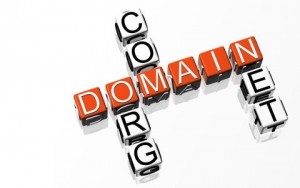 Most website owners, whether they own just one domain or hundreds of domains, will at some stage be approached by unscrupulous organisations, trying to get them to renew their domain names or buy new domain names at hugely inflated prices.
Most website owners, whether they own just one domain or hundreds of domains, will at some stage be approached by unscrupulous organisations, trying to get them to renew their domain names or buy new domain names at hugely inflated prices.
I regularly get enquiries from my clients who have received a “Domain Name Expiration Notice” email or even a letter in the post from some official sounding business (such as “Domain Renewal Group” or plenty of others). However, I suspect that many of them just receive n invoice, assume it is legitimate and go ahead an pay it. This initiates a transfer of the domain to a new registrar, and means that future renewals will continue to be at the inflated price (unless of course they get another domain renewal scam letter in the interim)
Unfortunately, it is usually the small business owners who normally get burnt by these schemes. They know that they have a domain name, and that it needs to be renewed every now and again, but get confused by the technical details, assume it is OK, and go ahead an pay.
One of the problems is that these renewal scams are in many cases not illegal, but they are certainly unethical. They prey on the naivety of website owners who assume that the notifications and invoices they receive are legitimate.
How do Domain Renewal Scams work?
 Domain name renewal scams are setup to work in a number of ways.
Domain name renewal scams are setup to work in a number of ways.
- You might be sent an invoice for a domain name that is very similar to your current domain name – the scammer hopes that you don’t notice the difference and just pay the invoice.
- You might receive notification that someone is trying to register your domain with a different top level domain or country domain and they are trying to help you “protect your intellectual property” by offering you first option.
- Alternatively, you could be sent a letter that looks like a renewal notice for your actual domain name, but is from a different company to the one which your domain is actually registered.
Check your Domain
The job for domain renewal scammers is pretty easy, because in most cases information about who owns domains (including contact details) is publicly available, although, there is often an option for you to make this information private as a part of the registration process – for an additional fee.
You (and anyone else, including domain scammers) can check the details of your own domain by using a WHOIS service such as www.domaintools.com. Simply enter your domain name, and click submit to see what information is publicly available. Different types of information are available depending on the type of domain name you have, but the main things that you should be aware of is :
- who your registrar is (this is the organisation that your domain is registered with) and
- when is the domain due to expire.
How to avoid Domain Scams?
To ensure that you don’t get ripped of by scammers – either by paying too much for the renewal of your own domain, or tricked into buying a new domain that you may not need, you should:
- Be aware of Domain Prices – make sure that you have at least some idea of what you should expect to be paying for your domain name. Take a look at WebConsulting’s domain name prices for an idea of costs for registering most common domains names
- Be suspicious of ANY unsolicited bills – be sceptical of any emails, letters or invoices you receive that you weren’t expecting or that are from organisations that you don;t recognise
- Know your domain details – follow the “Check your Domain” instructions above and make sure you know who your domain is registered with, and when it is due for renewal
- Is your domain renewal due soon? – scam domain notification renewals will often be sent out several months before the renewal id actually due, whereas legitimate ones tend to be sent out with month or less notice.

- Carefully read the Invoice – make sure to check that the domain name listed in the invoice is the same as your actual domain name. If it is the same, also check to make sure that the invoice is from the company that you have previously used to register your domain name.
Domain renewals and transfers
Whenever you receive a renewal notification – whether it is legitimate or otherwise, take a little time to check out current domain registration costs. These prices tend to have reduced over the years and can vary significantly even for legitimate domain registration providers. For example MelbourneIT (One of Australias original and for a long time largest, domain registration services) currently charges $75.60 for a single years .com registration and $140 for renewing a .com.au domain name for 2 years, whereas Webconsulting’s domain registration service currently charges just $12 a year for a .com and $28 for two years for .com.,au domains – a MUCH cheaper option for exactly the same service.
Transferring a domain name to another registrar is a pretty straightforward process, but do not leave it to the last minute, as in my experience there can sometimes be problems if a transfer is initiated within 1 week of it’s renewal date. If you think you are paying too much for your domains, and are looking at a making some significant savings on your domain registration costs, check out WebConsulting’s domain name prices , and why not transfer your domain today.

